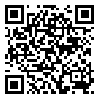Volume 6, Issue 7 (2016)
LRR 2016, 6(7): 91-116 |
Back to browse issues page
1- Assistant Professor Professor of Persian Language and Literature, University of Isfahan, Isfahan, Iran
2- Professor of Persian Language and Literature, University of Isfahan, Isfahan, Iran
3- Associate Professor of Linguistics, University of Isfahan, Isfahan, Iran
2- Professor of Persian Language and Literature, University of Isfahan, Isfahan, Iran
3- Associate Professor of Linguistics, University of Isfahan, Isfahan, Iran
Abstract: (7565 Views)
Among the linguistic tools that can assist researcher in investigating the relationship between the speaker and the audience, are the linguistic "modalities" which are manifested usually in the form of affective speech acts. Some kinds of texts in which are manifested more colorful the speaker’s mentalities, feelings and values, imply the affective acts; also in Masnavi that benefits from the literary diversities, this feature allows the speaker to use language as a social reality and on the way to create communication with the audience, the diversity of linguistic modalities is undeniable.
Due to the linguistic characteristics of mysticism, studying those linguistic modals that reflect the ontological and epistemological aspects of text is important. This article aims to show how the speaker by the use of modals known as logical modals, can successfully form his ideas and states into words and by this way informs the audience on his intellectual and value system. For this purpose, this article refers to the provided classifications of the various linguistic modals; hence first it explains the relationship between the modal semi-auxiliary verbs and the epistemological system governing the text and then analyzes the text in accordance with these tools.
Due to the linguistic characteristics of mysticism, studying those linguistic modals that reflect the ontological and epistemological aspects of text is important. This article aims to show how the speaker by the use of modals known as logical modals, can successfully form his ideas and states into words and by this way informs the audience on his intellectual and value system. For this purpose, this article refers to the provided classifications of the various linguistic modals; hence first it explains the relationship between the modal semi-auxiliary verbs and the epistemological system governing the text and then analyzes the text in accordance with these tools.
| Rights and permissions | |
 |
This work is licensed under a Creative Commons Attribution-NonCommercial 4.0 International License. |

